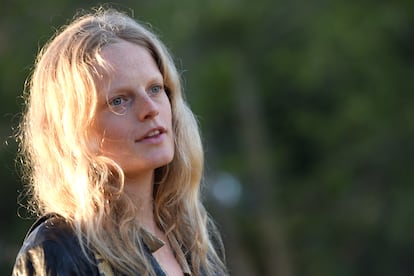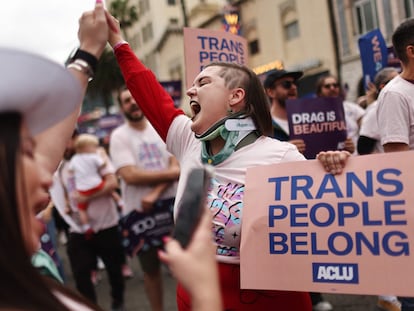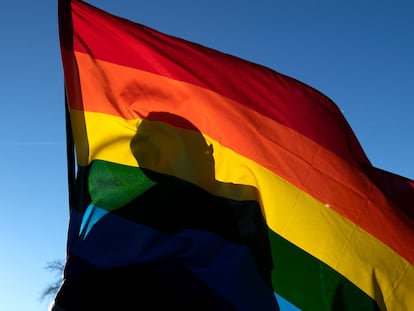The number of intersex people is comparable to the number of redhead, but chances are you don’t know any
Within the LGBTQI acronym, the I of intersex is one of the most unknown. If we were to ask for the definition, many would still answer with something about hermaphrodites. Old myths, little attention and a lack of public figures who have these traits are all factors that complicate the lives of intersex people

The probability of being born with red hair is low: less than 2% of the population has this genetic characteristic. Despite this, it’s possible that we know or have known someone with this hair color. Or, at the very least, a famous redhead comes to mind. On the other hand, it’s also possible that we don’t know any intersex people. Yet, the probability of being born with this condition is very similar to the likelihood of being a redhead. Specifically – according to the study How Sexually Dimorphic Are We? Review and Synthesis (2000), by Melanie Blackless – about 1.7% of births are to intersex people.
Within the LGBTQI acronym, the I of intersex is one of the most unknown realities. If we were to ask about its definition, a large number of people would continue to erroneously speak of hermaphrodites. “That’s the most widespread myth and – being the myth that it is – it’s wrong. Hermaphrodites are some animal and plant species that are capable of generating male and female gametes and self-reproducing. This doesn’t happen in the human species,” clarifies Camino Baró San Frutos, a psychologist and sexologist specializing in care for the LGTBQI community.
According to Brújula – a website focused on intersexual topics among Spanish speakers – being intersex encompasses “different corporalities, in which a person is born with variations of sexual characteristics that don’t seem to fit the typical definitions of man or woman.” This implies a wide variety of physical conditions that can affect the shape of genitals, the composition of the gonads, hormone levels, or chromosome patterns. In some cases, these anomalies are detected at birth and, in others, upon reaching puberty. According to Baró – who is also an intersex activist – there’s a general lack of knowledge about what this physical condition is. “The worst thing is that it’s unknown in very important fields, such as the medical field (specifically, in areas such as endocrinology, urology or gynecology), or even in certain LGBTQI+ environments,” she laments.

Being born with some intersex characteristic isn’t a pathology, nor a malformation, nor does it represent a health problem in and of itself. It’s part of the natural variability that occurs in nature and during embryonic development. Despite this, it has traditionally been customary to perform medical interventions – whether surgical (such as gonadectomies, vulvar reconstruction, or clitoridectomies) or hormonal – on intersex minors, so that they fit into the male-female binary. “While a small percentage [of these interventions] are necessary,” Baró, opines, “they often respond to a cosmetic purpose.”
In textbooks, in formal education and in sexual education, it’s difficult to find references to people with these physical characteristics. Either due to ignorance or with the intention of simplifying content, within the illustrations and explanation, only the male and female body are depicted. Hence, this 1.7% of boys and girls will find it very difficult to identify themselves and may feel the need to camouflage as an endosex person – a term that refers to people whose sexual anatomy and physical attributes conform to the cultural classification of male and female bodies. A story related to this theme – for ages 8 and up – is A Red-Haired Secret, written by Camino Baró herself.
According to the psychologist and sexologist, other difficulties that this group encounters have to do with the medical care they receive. Beyond medical interventions (which are sometimes medically unnecessary) there’s a lack of specialized endocrinology units that can provide adequate pharmacological care. “There are people and families who undergo a pilgrimage in search of a doctor who knows about [being intersex]... there are communities that don’t have any reference center,” she notes.
Checking the male or female box when registering a newborn with visible non-binary conditions can be very difficult. In certain jurisdictions, laws that regulate the rights of LGBTQI people allow for the section regarding the sex of the baby to be left blank for a maximum period of one year, so long as the intersex condition is specified. “It’s an insufficient and absurd measure, because in a year, the person hasn’t even begun to speak… [the baby isn’t] able to know what sex to register as,” Baró explains. “When the person grows up, the difficulties that the family is subjected to as they make changes in the documentation are very complex at a bureaucratic level.”
In Germany, since the end of 2018, the authorities have resolved the issue by allowing a third box to be checked after a birth – beyond male or female – when asking about the sex of a person. It’s the first European country – and one of the few worldwide – to explicitly recognize this option. Previously, Germany allowed you to leave the gender box blank.
Why are there no intersex people in the public eye?
According to Spain’s Ministry of Equality, it is estimated that some 800,000 people in the country have some form of intersex condition… but there are no public figures who openly declare to having these traits in the fields of culture, art, or politics. At the international level, there are few exceptions, such as the Belgian model Hanne Gaby Odiele. There are some people who have made themselves visible from the field of activism, such as Camino Baró herself. And there are some others in the field of sports, such as former Spanish hurdler María José Martínez Patiño, or the South African middle-distance runner Caster Semenya. But in these cases, usually, the people involved have not made their condition public voluntarily – in fact, they’ve often been penalized for being intersex. This situation makes it even less than ideal to want to be a role model for anyone. On the contrary, you’d probably be even more likely to continue keeping your secret.

This lack of public figures, according to the activist, is due to the fact that “we continue to be a society that divides people into masculine and feminine [categories] and that, at the administrative level, our entire system follows an organization by sex that obeys patriarchal logic.” Being intersex breaks with this classification system, making it clear that, rather, there’s a gender continuum that goes beyond man and woman, putting the binary system in check.
Being different is difficult… especially when there’s a lot of ignorance about your difference.
Still, it’s essential to move forward as a diverse society. For this reason, testimonies such as those made by Camino Baró are very valuable. In her experience as an activist, she comments that she was surprised by “the good response from everyone when I told them that I was an intersex person.” She realized how the silence that her relatives had maintained to “protect her safety” had been “unnecessary.” What isn’t spoken about doesn’t exist… and intersexualities are realities that also need their space in the public sphere.
Sign up for our weekly newsletter to get more English-language news coverage from EL PAÍS USA Edition
Tu suscripción se está usando en otro dispositivo
¿Quieres añadir otro usuario a tu suscripción?
Si continúas leyendo en este dispositivo, no se podrá leer en el otro.
FlechaTu suscripción se está usando en otro dispositivo y solo puedes acceder a EL PAÍS desde un dispositivo a la vez.
Si quieres compartir tu cuenta, cambia tu suscripción a la modalidad Premium, así podrás añadir otro usuario. Cada uno accederá con su propia cuenta de email, lo que os permitirá personalizar vuestra experiencia en EL PAÍS.
¿Tienes una suscripción de empresa? Accede aquí para contratar más cuentas.
En el caso de no saber quién está usando tu cuenta, te recomendamos cambiar tu contraseña aquí.
Si decides continuar compartiendo tu cuenta, este mensaje se mostrará en tu dispositivo y en el de la otra persona que está usando tu cuenta de forma indefinida, afectando a tu experiencia de lectura. Puedes consultar aquí los términos y condiciones de la suscripción digital.
More information

Transgender and nonbinary people are often sidelined at Pride. This year is different
Últimas noticias
Welcome to the post-religion era: The idea of Christianity as the absolute truth has become obsolete
‘I thought you would like it’: The risky sexual practice popularized by TV shows and TikTok
The digitalization of tourism: ‘They promise experiences and gave us the worst possible one’
Mexican peso defies uncertainty with forecasts of a new period of stability in 2026
Most viewed
- Sinaloa Cartel war is taking its toll on Los Chapitos
- Reinhard Genzel, Nobel laureate in physics: ‘One-minute videos will never give you the truth’
- Oona Chaplin: ‘I told James Cameron that I was living in a treehouse and starting a permaculture project with a friend’
- Why the price of coffee has skyrocketed: from Brazilian plantations to specialty coffee houses
- Silver prices are going crazy: This is what’s fueling the rally









































